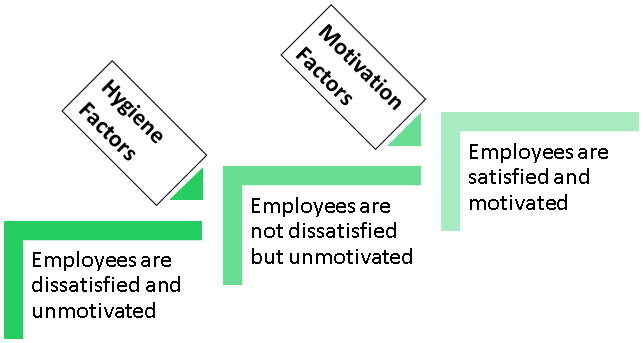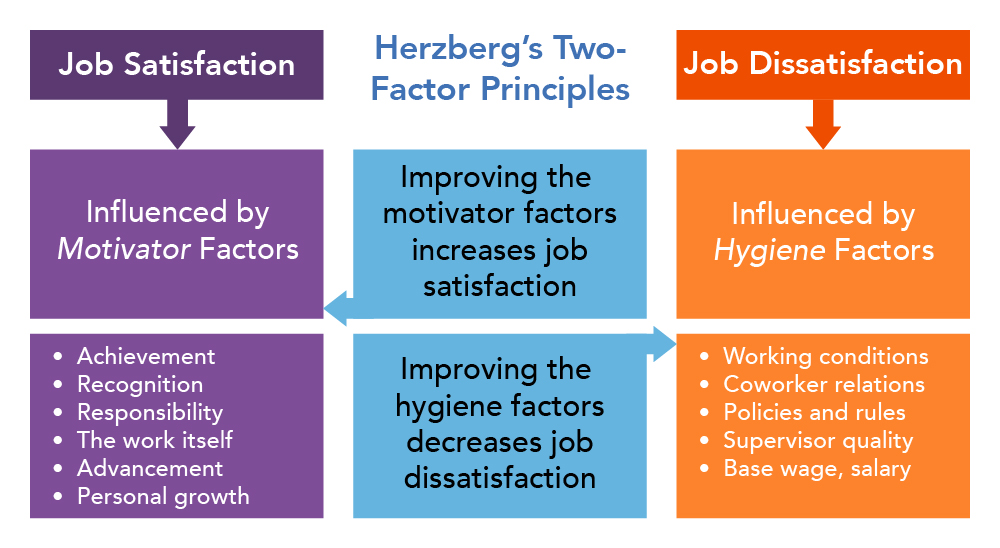What is the Dual-Factor Theory?
In the 1960s, the Dual-Factor Theory was created by psychologist Fredrick Herzberg to create an understanding of employee contentment. Herzberg came up with the theory by asking individuals to describe the situations where they felt good and where they felt poorly about their jobs. Eventually, from his research he was able to find the major differences.
The theory is based on two factors that affect employee satisfaction: motivation factors and hygiene factors. Motivation factors can encourage employees to work harder while hygiene factors do not encourage employees to work harder but will cause employees to become unsatisfied if they are not available. In other words, the theory demonstrates that poor hygiene factors decrease employee job satisfaction and motivating factors increase employee job satisfaction.

Motivation Factors
Achievement
- Make employees feel as if they are doing something important.
Recognition
- Recognize employees and coworkers for their successes.
The work itself
- The workload of employees must be interesting, must vary from project to project, and must give employees enough of a challenge.
Responsibility
- Employees want to take responsibility for their own work to to feel as if they have completed the task.
Transparency
- In common, work environment transparency may be a logic of sharing data openly in an exertion to advantage the organization and its individuals.
Advancement
- Promotions are key.
Growth
- There should be an opportunity for employees to grow.
Hygiene Factors
Company policies
- Policies should be equal and clear for employees to understand.
Supervision
- Supervision has to be fair and performed at appropriate times.
Relationships
- There should be a zero tolerance policy for bullying. Proper relationships in the workplace include the ones that are healthy, good-natured, and appropriate.
Work conditions
- Working environment should have the proper equipment, be fit for its purpose, and be hygienic.
Status
- The reputation of the company should be upheld.
Salary
- The pay structure should be fair and rational.
Security
- It is essential for employees to feel that they are secure in holding their job position.
How to make a happy work life
There are two steps to creating employee satisfaction:
1-Eliminate Job Dissatisfaction
Dissatisfaction comes from poor hygiene factors. In order to resolve any dissatisfaction issues, it is important to fix poor company policies; provide employees with supportive and non-intrusive supervision; create a culture filled with respect for all employees; promise that wages are competitive; establish job status through giving employees meaningful work; and provide job security.
2-Create Opportunities for Job Satisfaction
In order to create job satisfaction, you must address any motivating factors. Addressing any motivating factors related to work will enrich the job environment and purpose. When addresses motivating factors, look for ways to provide employees with opportunities for achievement; recognize what employees are contributing; create work that is found rewarding to employees; assign tasks that match employee skills and experience; give responsibility to all employees; provide employees with opportunities to advance in the company; and offer any training and development opportunities to employees related to your industry.


